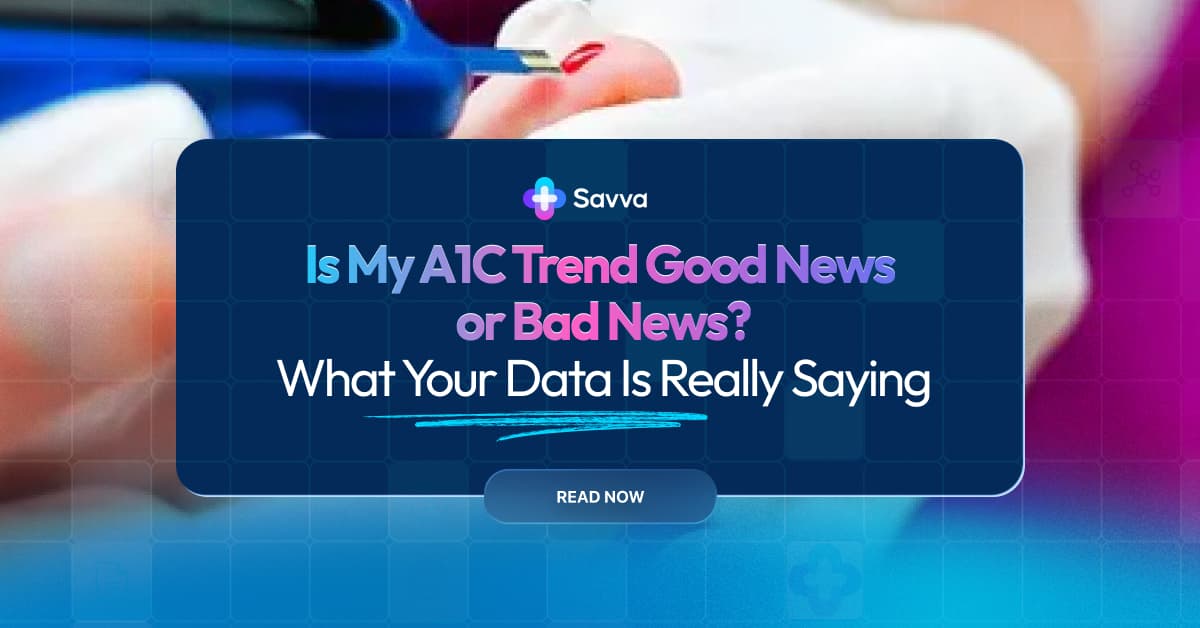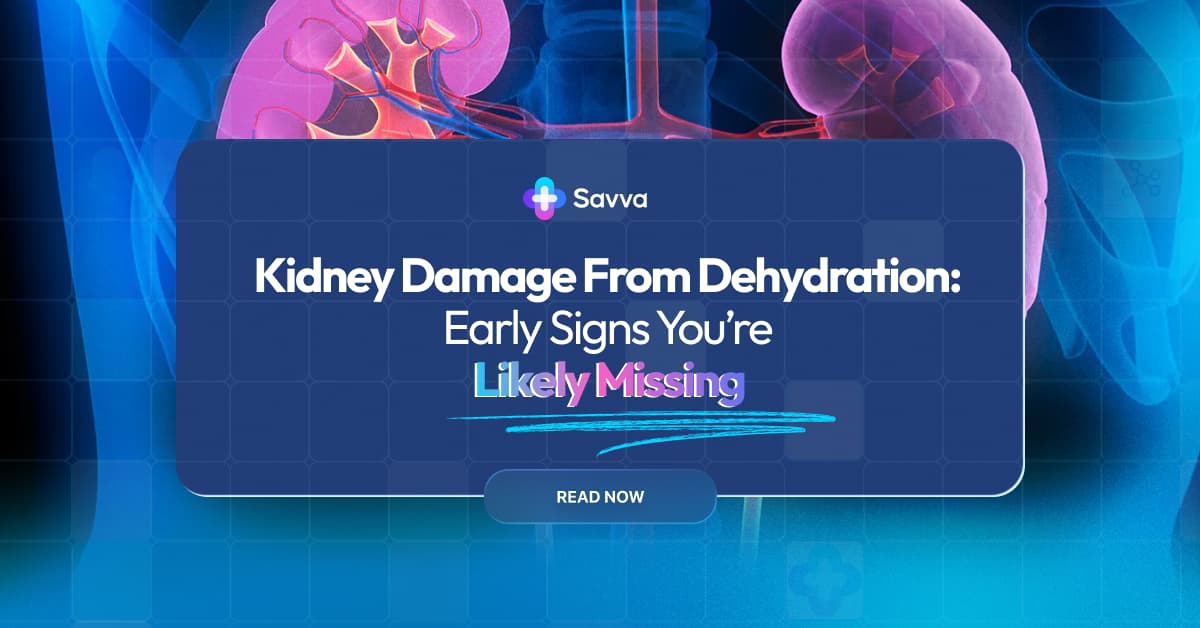Most people glance at their A1C test result and assume it tells the full story of their blood sugar health. Doctors often present it as the ultimate truth, whether it’s labeled normal, prediabetic, or diabetic.
But here’s the catch: a single number can either reassure you or mislead you. The test simply measures the percentage of sugar attached to your red blood cells over the past three months.
The thresholds are simple:
- Normal: under 5.7%
- Prediabetes: 5.7–6.4%
- Diabetes: 6.5% or higher
But here’s the surprising truth: an A1C trend isn’t always good news, and a “bad” one isn’t always the end of the story.
When A1C Numbers Mislead
Did you know anemia can lower A1C even if your glucose is high? Or that chronic kidney disease can falsely raise it?
Even iron deficiency can distort results.
This is why relying only on A1C can be risky, your blood sugar average tells one story, but the hidden patterns tell another.
The Overlooked Numbers That Matter
Doctors often focus on A1C, cholesterol, and blood pressure, but deeper signals are often more predictive of future health:
- Time-in-Range: At least 70% of your readings between 70–180 mg/dL.
- Glycemic Variability: Wide swings accelerate blood vessel damage.
- Fructosamine test: Captures shorter 2–3 week changes your A1C may miss.
- hs-CRP: Above 2.0 mg/L signals inflammation linked to cardiovascular risk.
- Triglyceride-to-HDL ratio: Higher than 3.0 suggests insulin resistance risk.
- Lipoprotein(a): Genetic cholesterol particle tied to early heart disease.
Your A1C might be fine today, but your blood vessels could already be under attack.
Hidden Triggers People Rarely Hear About
Here are surprising factors that influence A1C without you realizing:
- High altitude: Above 8,000 feet, red blood cell life changes, shifting A1C values.
- Vitamin B12 deficiency: Common in long-term metformin use, alters test accuracy.
- Seasonal changes: A1C often runs higher in winter.
- Sleep apnea: Strongly linked with glucose spikes and poor A1C control.
Why Waiting for Symptoms is Too Late
If you wait until symptoms show, you’ve already missed the warning signs. That’s why tracking subtle markers matters far before a doctor calls something “abnormal.”
- An A1C of 6.2% can look fine, but if your time-in-range is only 50%, half your day is damaging highs and lows.
- Inflammation measured by hs-CRP above 2.0 mg/L points to vascular stress, even with normal cholesterol.
- A triglyceride-to-HDL ratio over 3.0 signals insulin resistance up to five years before diabetes is diagnosed.
The danger isn’t in the number you’re given, it’s in the trend you ignore until it’s too late.
Savva: Making the Invisible Visible
Here’s where Savva steps in. Instead of flipping through confusing labs, Savva will soon provide:
- A1C trends translated into plain language
- Time-in-range insights alongside glucose averages Early warnings for nighttime spikes
- Clear reports on cholesterol and kidney health
Savva isn’t launched yet, but you can sign up for early access. When it arrives, you’ll finally see your health story with clarity.
Hidden Health Markers Beyond A1C
Most people never hear about these, yet they predict problems earlier than standard tests:
- eGFR: Below 60 mL/min/1.73m² suggests kidney damage.
- Microalbuminuria: Small protein leaks in urine show blood vessel stress.
- Nocturnal glucose spikes: Cause nerve damage yet remain invisible on A1C.
- Heart Rate Variability: Declining HRV predicts poor glucose handling and cardiovascular strain.
The silent numbers whisper years before the loud diagnosis arrives.
Other Health Numbers Few Track
- Advanced Glycation End Products: Sticky proteins that accelerate aging and tissue damage.
- Fasting Insulin: High insulin with “normal” glucose signals resistance years before diabetes.
- Cholesterol particle size: Small dense LDL is more dangerous than total cholesterol.
- hs-CRP: Even small increases mark inflammation and predict cardiovascular outcomes.
The danger isn’t the number, it’s the hidden story behind it.
FAQs People Always Ask
Q1. Why does my A1C look normal even when I don’t feel right?
Because it’s just an average, a tidy lab number can’t show the messy swings. And trust me, your body feels those highs and crashes.
Q2. Can stress really change my A1C?
Yes, quicker than most expect, stress hormones push sugar into your blood. Stay stressed, and A1C sneaks up even if your meals look pretty healthy.
Q3. Is a lower A1C always a good thing?
Not really, drop it too far or too fast and you risk dangerous lows. That pressure doesn’t just feel bad, it can hurt your brain and heart.
Q4. Why don’t doctors check things like fructosamine or fasting insulin?
Honestly it’s mostly habit. Guidelines place heavy emphasis on A1C and insurance or clinic systems often make additional tests harder to order without a clear reason
Q5. Do supplements really help bring A1C down?
Sometimes, cinnamon, berberine, alpha-lipoic acid, helpful for some, useless for others. Think of them as sidekicks, not superheroes. They’re not a magic cure.
Q6. How can I tell if my A1C is giving me the wrong picture?
Stack it with other checks, fasting insulin, time-in-range, inflammation markers. When you combine them, the bigger and more accurate story usually comes into view.
Final Thoughts
Here’s the catch: A1C matters, but it’s only one chapter. Reading just that number is like judging a whole book by its cover art.
What’s missing are the quiet signals, kidney numbers, cholesterol particle size, even how your sugar behaves at night. Those details whisper long before the big problems arrive. And this is where Savva comes in. Soon, instead of juggling slips of paper and confusing reports, you’ll get one clear story. Something you can actually follow.
Because here’s the truth: your body has been talking all along, every subtle shift, every lab result, it’s part of the message. The hard part is learning how to hear it, with the right tools, the noise becomes a story. A story that helps you act sooner, with more confidence, and a lot less guessing.


